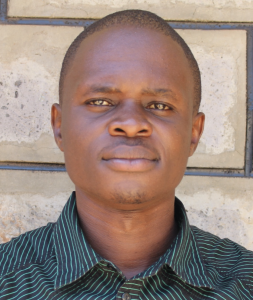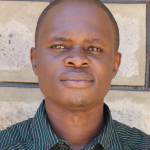"Water scarcity is really affecting this institution and this has forced the management of the school to request that students draw water from their homes for school use. This has really affected our normal learning hours, thus destabilizing our school's performance. Right now, our school is not performing well and we can tell why," said the Deputy Head Teacher of Ivola Primary School.
Founded in 1958 and sponsored by the Pentecostal Assemblies of God Church, Ivola Primary School has 365 students, 16 teachers, and yet no source of water on school grounds.
Each day, students are asked to carry water from home before arriving for their first lessons at 7:00 am. Then, as the day progresses and the water runs out, the pupils are sent home again during lunch and at any other time as needed to fetch more water. The students' water is the only source for the entire school's drinking, cooking, and cleaning needs, yet it is difficult to meet these needs when depending on such young children with small containers to carry enough water. Each walk with water not only takes away students' precious learning time, but it often leaves them too tired to focus when they are in class. To both the students' and teachers' dismay, pupils' academic success is declining accordingly.
Students collect water from a number of sources at home, but the teachers are not able to monitor them and so the quality and safety of these sources are questioned. A spot check of the students' containers used for carrying water to the school revealed that they are not clean. Quite a number had no covers, further exposing the water to contaminants. Even if the students fetched water from a clean and safe source, their own containers would contaminate it. Because the water is combined for use at school, even 1 contaminated source means everyone suffers.
"We have had cases of diarrhea in our institution for years now and this we relate to the challenge of water in our institution. Our classrooms can go a week without being cleaned, especially during the drought season, due to the unavailability of the precious commodity," said Head Teacher Sir Mark Kijo.
Water-related illnesses are keeping students home, further affecting their grades and making their families spend a large number of resources on treatment and medication.
The school struggles to accomplish even basic levels of sanitation and hygiene. The school feeding program is affected when the cook cannot properly wash all of the cooking utensils. The latrines and classrooms are not thoroughly cleaned, and sparing any water for handwashing is out of the question.
What We Can Do:
Rain Tank
A 75,000-liter rainwater catchment tank will help alleviate the water crisis at this school. The school will help collect the needed construction materials such as sand, bricks, rocks, and water for mixing cement. We will complement their materials by providing an expert team of artisans, tools, hardware, and the guttering system. Once finished, this tank will begin catching rainfall that will be used by the school’s students and staff for drinking, handwashing, cooking, cleaning, and much more.
We and the school strongly believe that all of these components will work together to improve standards at this school, which will help lead to better student academic performance and will help to unlock the potential for these students to live better, healthier lives.
Handwashing Stations
There is currently nowhere for students to wash their hands after using the latrines or before eating lunch, let alone the water to do so.
The student health club will oversee the 2 new handwashing stations we will provide, and make sure they are kept clean and in working condition. The club leaders will fill the handwashing stations with water daily and make sure they are always supplied with a cleaning agent such as soap or ash.
VIP Latrines
2 triple-door latrine blocks will be constructed with local materials that the school will help gather. 3 doors will serve the girls while the other 3 will serve the boys. All of these new latrines will have cement floors that are designed to be easy to use and to clean. And with a rain tank right on school property, there should be enough water to keep them clean.
Training on Health, Hygiene, COVID-19, and More
We will hold a 1-day intensive training session with students, teachers, and parents. This training will cover a wide range of topics including COVID-19 symptoms, transmission routes, and prevention; personal and environmental hygiene; and the operation and maintenance of the rain tank, latrines, and handwashing stations. There will be a special emphasis on handwashing.
Our team of facilitators will use a variety of methods to train, including participatory hygiene and sanitation transformation, and asset-based community development. We will initiate a student health club, which will prepare students to lead other pupils into healthy habits at school and at home. We will also lead lectures, group discussions, and provide illustrative handouts to teach health topics and ways to promote good hygiene practices within the school including handwashing and water treatment. We will then conduct a series of follow-up trainings before transitioning to our regularly scheduled support visits throughout the year.

 Rainwater Catchment
Rainwater Catchment
 Rehabilitation Project
Rehabilitation Project





































